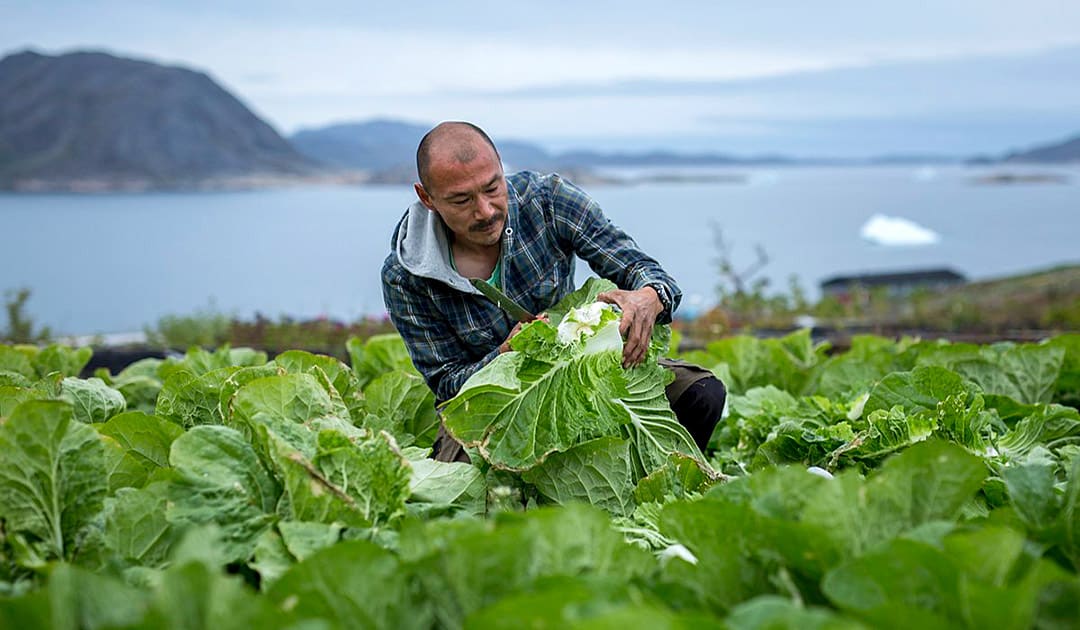
Due to climate change, temperatures are also rising on Greenland, which may lead to major changes on the island. Global warming is melting the ice, temperatures are rising and more fertile land is being created for agriculture. In addition, coveted raw materials become more accessible. The inhabitants dream of flourishing landscapes and oil calls from an ice-free sea.

Vegetable cultivation
89% of Greenland is covered with an ice sheet. But climate change is causing more and more ice to melt. In the last ten years, the annual ice loss has doubled. Bad for our climate, but for some Greenlanders, warming is also an opportunity.
Up to now, vegetables have mainly been imported, are expensive and suffer from the long transport routes. Growing potatoes is a comparatively young branch of Greenlandic agriculture, which only became possible with the warmer climate and longer growing seasons. In terms of figures, the cultivation of 110 tonnes of potatoes (2017) does not yet make that much of a difference. But the yield of 16 – 20 tonnes per hectare is only slightly lower than in Norway, Sweden or Finland (22 – 25 t / ha).
In the south, many farms grow cabbage and other vegetables in addition to potatoes. The growing season has become longer with climate warming. In South Greenland the growing season now lasts from May to September. In stores, domestic iceberg lettuce is advertised as “The only true iceberg lettuce.” Even strawberries grow under foil.
Sheep and cattle breeding
Kaava Egede and his son Miki run a sheep and cattle farm in southern Greenland and hope to sell meat from their new breed of Scottish Galloway cattle to restaurants and hotels.
Working with an agricultural consultant, they decided to purchase the Scottish Galloway breed of cattle. This breed is slightly larger and has longer hair in winter than the Dexter cattle already found in Greenland. In addition, the meat yield is somewhat higher.
However, there are also some risks associated with livestock farming. The climate is expected to become more unpredictable. In recent years there have been some very dry summers, plus burnt grassland has made fodder for livestock scarcer.

Sofus Frederiksen is Greenland’s largest cattle farmer. He started raising cattle back in 2004. Of the 300 cows he had last year, he sold 58 to Neqi slaughterhouse, which resold them to food distributor Brugsen. Although he is optimistic about the future, there are still a number of challenges for the livestock industry to overcome, writes the Sermitsiaq newspaper.
In order to run the cattle farm successfully, Frederiksen would have to be able to sell at least 150 cattle on the Greenlandic market.
Heiner Kubny, PolarJournal





